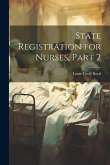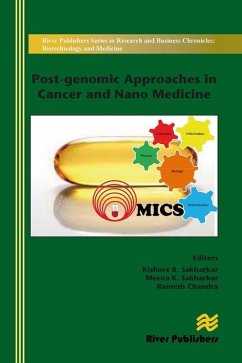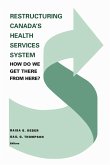Rights and Resources
Herausgeber: Miller, Frances H.
Schade – dieser Artikel ist leider ausverkauft. Sobald wir wissen, ob und wann der Artikel wieder verfügbar ist, informieren wir Sie an dieser Stelle.
Rights and Resources
Herausgeber: Miller, Frances H.
- Broschiertes Buch
- Merkliste
- Auf die Merkliste
- Bewerten Bewerten
- Teilen
- Produkt teilen
- Produkterinnerung
- Produkterinnerung
This title was first published in 2003. The fulfilment of health care rights in a world where resources are scarce is a prominent issue. In this volume, Frances H. Miller introduces studies on a wide variety of aspects of this important yet complex process.
Andere Kunden interessierten sich auch für
![The First into the Dark The First into the Dark]() Michael RobertsonThe First into the Dark25,99 €
Michael RobertsonThe First into the Dark25,99 €![State Registration for Nurses, Part 2 State Registration for Nurses, Part 2]() Louie Croft BoydState Registration for Nurses, Part 218,99 €
Louie Croft BoydState Registration for Nurses, Part 218,99 €![Post-Genomic Approaches in Cancer and Nano Medicine Post-Genomic Approaches in Cancer and Nano Medicine]() Post-Genomic Approaches in Cancer and Nano Medicine49,99 €
Post-Genomic Approaches in Cancer and Nano Medicine49,99 €![Restructuring Canada's Health Systems Restructuring Canada's Health Systems]() Restructuring Canada's Health Systems62,99 €
Restructuring Canada's Health Systems62,99 €![Trading Women's Health and Rights Trading Women's Health and Rights]() Caren Grown / Elissa Braunstein / Anju Malhotra (eds.)Trading Women's Health and Rights47,99 €
Caren Grown / Elissa Braunstein / Anju Malhotra (eds.)Trading Women's Health and Rights47,99 €![American Breakdown American Breakdown]() Jennifer LundenAmerican Breakdown18,99 €
Jennifer LundenAmerican Breakdown18,99 €
This title was first published in 2003. The fulfilment of health care rights in a world where resources are scarce is a prominent issue. In this volume, Frances H. Miller introduces studies on a wide variety of aspects of this important yet complex process.
Produktdetails
- Produktdetails
- Verlag: Taylor & Francis Ltd
- Seitenzahl: 624
- Erscheinungstermin: 3. Januar 2020
- Englisch
- Abmessung: 244mm x 168mm
- Gewicht: 1150g
- ISBN-13: 9781138718975
- ISBN-10: 1138718971
- Artikelnr.: 75653679
- Herstellerkennzeichnung
- Libri GmbH
- Europaallee 1
- 36244 Bad Hersfeld
- gpsr@libri.de
- Verlag: Taylor & Francis Ltd
- Seitenzahl: 624
- Erscheinungstermin: 3. Januar 2020
- Englisch
- Abmessung: 244mm x 168mm
- Gewicht: 1150g
- ISBN-13: 9781138718975
- ISBN-10: 1138718971
- Artikelnr.: 75653679
- Herstellerkennzeichnung
- Libri GmbH
- Europaallee 1
- 36244 Bad Hersfeld
- gpsr@libri.de
Frances H. Miller
Contents: Introduction - patient rights and health care resources: two
sides of an irregular coin. Part I: The Rights/Resources Relationship:
Shifting paradigms in bioethics and health law: the rise of a new
pragmatism, Susan M. Wolf ; The empire of death: how culture and economics
affect informed consent in the US, the UK and Japan, George J. Annas and
Frances H. Miller. Part II: Patient Rights: Informed Consent: Bye-Bye
Bolam: a medical litigation revolution?, Margaret Brazier and José Miola;
Rogers v. Whitaker and informed consent in Australia: a fair dinkum duty of
disclosure, Don Chalmers and Robert Schwartz. Reproductive Rights: Frozen
Embryos: Disputing over embryos: of contracts and consents, Ellen A.
Waldman. Posthumous Reproduction: Posthumous reproduction and the meanings
of autonomy, Belinda Bennett. Research Subjects' Rights: The suppressed
legacy of Nurumberg, Robert A. Burt; Research in developing countries:
taking 'Benefit' seriously, Leonard H. Glantz, George J. Annas, Michael A.
Grodin and Wendy K. Mariner; Experimental treatment: oxymoron or
aspiration?, Nancy M.P. King. Genetics: The control of genetic research:
involving the 'Groups Between', Henry T. Greely; How will we regulate
genetic enhancement?, Maxwell J. Mehlman. Balancing Rights: Individuals v.
Society: Public health and private lives, Margaret Brazier and John Harris.
Part III: Health Care Resources: Resource Allocation Theory: Justice in the
distribution of health care, Ronald Dworkin; Symbols, rationality, and
justice: rationing health care, Daniel Callahan; Limits to health care:
fair procedures, democratic deliberation, and the legitimacy problem for
insurers, Norman Daniels and James Sabin. Property Rights in Health Care
Resources: Can patents deter innovation? The anticommons in biomedical
research, Michael A. Heller and Rebecca S. Eisenberg; Human tissue: rights
in the body and its parts, Gerald Dworkin and Ian Kennedy. Legislative and
Judicial Approaches to Resource Allocation: Resource allocation in the
National Health Service, Christopher Newdick; Health care rationing in the
courts: a comparative study, Timothy Stoltzfus Jost. Resource Allocation
and Vulnerable Groups: Life style, health status, and distributive justice,
Robert L. Schwartz; De facto health-care rationing by age: the law has no
remedy, Marshall B. Kapp; Name index.
sides of an irregular coin. Part I: The Rights/Resources Relationship:
Shifting paradigms in bioethics and health law: the rise of a new
pragmatism, Susan M. Wolf ; The empire of death: how culture and economics
affect informed consent in the US, the UK and Japan, George J. Annas and
Frances H. Miller. Part II: Patient Rights: Informed Consent: Bye-Bye
Bolam: a medical litigation revolution?, Margaret Brazier and José Miola;
Rogers v. Whitaker and informed consent in Australia: a fair dinkum duty of
disclosure, Don Chalmers and Robert Schwartz. Reproductive Rights: Frozen
Embryos: Disputing over embryos: of contracts and consents, Ellen A.
Waldman. Posthumous Reproduction: Posthumous reproduction and the meanings
of autonomy, Belinda Bennett. Research Subjects' Rights: The suppressed
legacy of Nurumberg, Robert A. Burt; Research in developing countries:
taking 'Benefit' seriously, Leonard H. Glantz, George J. Annas, Michael A.
Grodin and Wendy K. Mariner; Experimental treatment: oxymoron or
aspiration?, Nancy M.P. King. Genetics: The control of genetic research:
involving the 'Groups Between', Henry T. Greely; How will we regulate
genetic enhancement?, Maxwell J. Mehlman. Balancing Rights: Individuals v.
Society: Public health and private lives, Margaret Brazier and John Harris.
Part III: Health Care Resources: Resource Allocation Theory: Justice in the
distribution of health care, Ronald Dworkin; Symbols, rationality, and
justice: rationing health care, Daniel Callahan; Limits to health care:
fair procedures, democratic deliberation, and the legitimacy problem for
insurers, Norman Daniels and James Sabin. Property Rights in Health Care
Resources: Can patents deter innovation? The anticommons in biomedical
research, Michael A. Heller and Rebecca S. Eisenberg; Human tissue: rights
in the body and its parts, Gerald Dworkin and Ian Kennedy. Legislative and
Judicial Approaches to Resource Allocation: Resource allocation in the
National Health Service, Christopher Newdick; Health care rationing in the
courts: a comparative study, Timothy Stoltzfus Jost. Resource Allocation
and Vulnerable Groups: Life style, health status, and distributive justice,
Robert L. Schwartz; De facto health-care rationing by age: the law has no
remedy, Marshall B. Kapp; Name index.
Contents: Introduction - patient rights and health care resources: two
sides of an irregular coin. Part I: The Rights/Resources Relationship:
Shifting paradigms in bioethics and health law: the rise of a new
pragmatism, Susan M. Wolf ; The empire of death: how culture and economics
affect informed consent in the US, the UK and Japan, George J. Annas and
Frances H. Miller. Part II: Patient Rights: Informed Consent: Bye-Bye
Bolam: a medical litigation revolution?, Margaret Brazier and José Miola;
Rogers v. Whitaker and informed consent in Australia: a fair dinkum duty of
disclosure, Don Chalmers and Robert Schwartz. Reproductive Rights: Frozen
Embryos: Disputing over embryos: of contracts and consents, Ellen A.
Waldman. Posthumous Reproduction: Posthumous reproduction and the meanings
of autonomy, Belinda Bennett. Research Subjects' Rights: The suppressed
legacy of Nurumberg, Robert A. Burt; Research in developing countries:
taking 'Benefit' seriously, Leonard H. Glantz, George J. Annas, Michael A.
Grodin and Wendy K. Mariner; Experimental treatment: oxymoron or
aspiration?, Nancy M.P. King. Genetics: The control of genetic research:
involving the 'Groups Between', Henry T. Greely; How will we regulate
genetic enhancement?, Maxwell J. Mehlman. Balancing Rights: Individuals v.
Society: Public health and private lives, Margaret Brazier and John Harris.
Part III: Health Care Resources: Resource Allocation Theory: Justice in the
distribution of health care, Ronald Dworkin; Symbols, rationality, and
justice: rationing health care, Daniel Callahan; Limits to health care:
fair procedures, democratic deliberation, and the legitimacy problem for
insurers, Norman Daniels and James Sabin. Property Rights in Health Care
Resources: Can patents deter innovation? The anticommons in biomedical
research, Michael A. Heller and Rebecca S. Eisenberg; Human tissue: rights
in the body and its parts, Gerald Dworkin and Ian Kennedy. Legislative and
Judicial Approaches to Resource Allocation: Resource allocation in the
National Health Service, Christopher Newdick; Health care rationing in the
courts: a comparative study, Timothy Stoltzfus Jost. Resource Allocation
and Vulnerable Groups: Life style, health status, and distributive justice,
Robert L. Schwartz; De facto health-care rationing by age: the law has no
remedy, Marshall B. Kapp; Name index.
sides of an irregular coin. Part I: The Rights/Resources Relationship:
Shifting paradigms in bioethics and health law: the rise of a new
pragmatism, Susan M. Wolf ; The empire of death: how culture and economics
affect informed consent in the US, the UK and Japan, George J. Annas and
Frances H. Miller. Part II: Patient Rights: Informed Consent: Bye-Bye
Bolam: a medical litigation revolution?, Margaret Brazier and José Miola;
Rogers v. Whitaker and informed consent in Australia: a fair dinkum duty of
disclosure, Don Chalmers and Robert Schwartz. Reproductive Rights: Frozen
Embryos: Disputing over embryos: of contracts and consents, Ellen A.
Waldman. Posthumous Reproduction: Posthumous reproduction and the meanings
of autonomy, Belinda Bennett. Research Subjects' Rights: The suppressed
legacy of Nurumberg, Robert A. Burt; Research in developing countries:
taking 'Benefit' seriously, Leonard H. Glantz, George J. Annas, Michael A.
Grodin and Wendy K. Mariner; Experimental treatment: oxymoron or
aspiration?, Nancy M.P. King. Genetics: The control of genetic research:
involving the 'Groups Between', Henry T. Greely; How will we regulate
genetic enhancement?, Maxwell J. Mehlman. Balancing Rights: Individuals v.
Society: Public health and private lives, Margaret Brazier and John Harris.
Part III: Health Care Resources: Resource Allocation Theory: Justice in the
distribution of health care, Ronald Dworkin; Symbols, rationality, and
justice: rationing health care, Daniel Callahan; Limits to health care:
fair procedures, democratic deliberation, and the legitimacy problem for
insurers, Norman Daniels and James Sabin. Property Rights in Health Care
Resources: Can patents deter innovation? The anticommons in biomedical
research, Michael A. Heller and Rebecca S. Eisenberg; Human tissue: rights
in the body and its parts, Gerald Dworkin and Ian Kennedy. Legislative and
Judicial Approaches to Resource Allocation: Resource allocation in the
National Health Service, Christopher Newdick; Health care rationing in the
courts: a comparative study, Timothy Stoltzfus Jost. Resource Allocation
and Vulnerable Groups: Life style, health status, and distributive justice,
Robert L. Schwartz; De facto health-care rationing by age: the law has no
remedy, Marshall B. Kapp; Name index.







